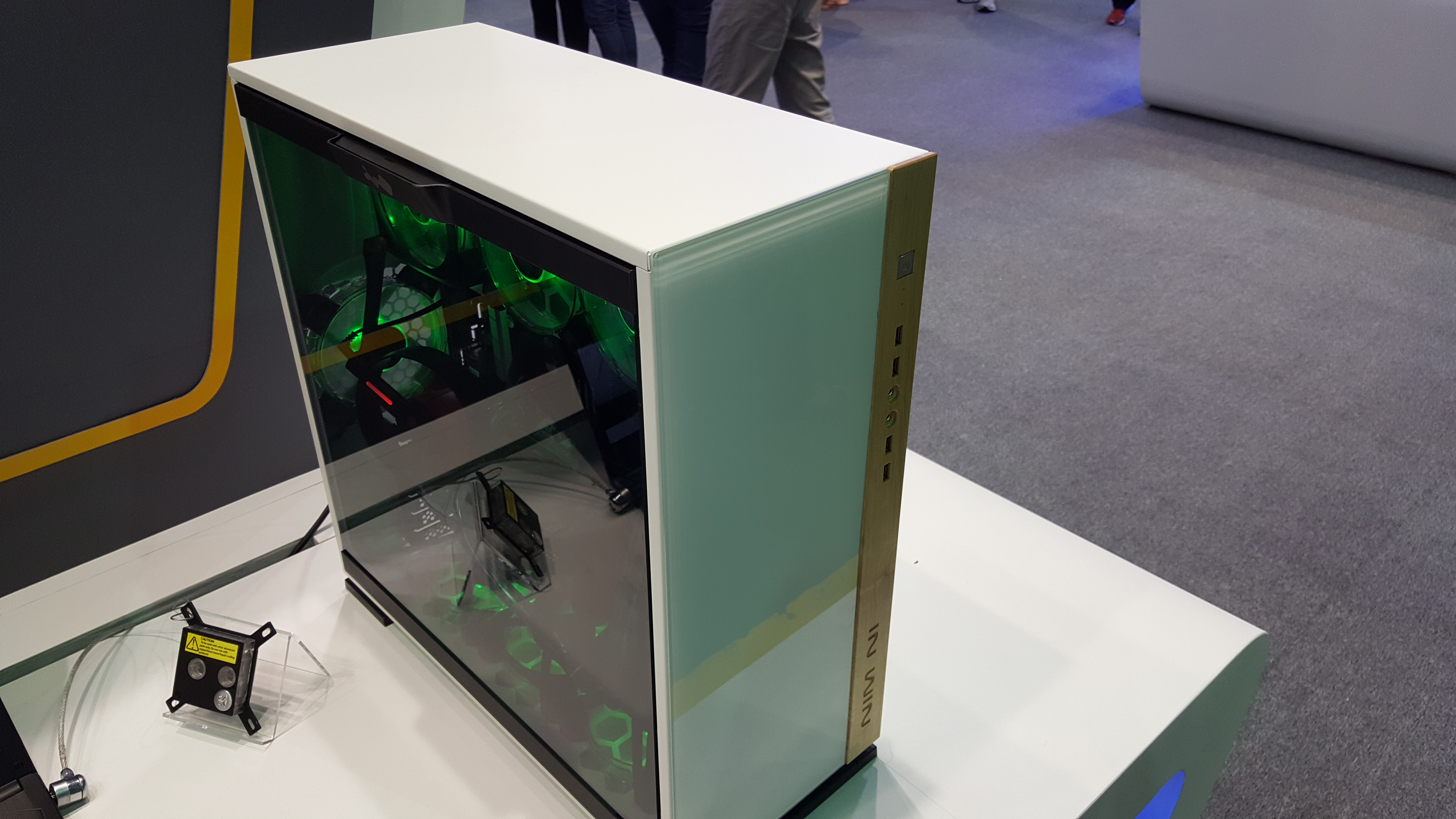In Win's wood and glass cases are real stunners at Computex 2017
Tempered glass and wood paneling make for some exquisite looking cases.

When I think of case maker In Win, I think of two things. One: crazy concept projects, the kind that draw big crowds on the show floor of Computex every year. This year that concept is the Winbot, which recognizes gestures and can take your picture. The second thing: tempered glass. In Win says it was the first case maker to use tempered glass, and whether or not it was literally the first, it was definitely ahead of the curve. Now that everyone's using tempered glass, what's In Win got up its sleeve to woo us?
The answer, judging from my time in In Win's booth this year, is across the board elegant, stylish design, using glass, metal, and even wood in some damn pretty cases.
I liked every one of the dozen or so new cases In Win had on display, which include several black/white versions and some small variants of a few models. The standout cases were the mini-ITX Gaming Cube A1 and the full ATX 806 mid-tower, which pair light brown wooden panels with white metal and smoky glass.

The wood is just really, really nice in person; it doesn't feel kitschy, even if it's much more form than function. It doesn't especially feel retro, like an old speaker or TV set, perhaps because it's used so sparingly. It just feels like a refreshing bit of design using a material we never see in PC cases.
The Gaming A1 and 806 are based on existing In Win case designs, but with some nice tweaks. Both use tempered glass side panels, but instead of the usual thumbscrews used to hold them into place, In Win's got a new mounting system. On the A1, a pair of plastic knobs snap into place to hold the glass and pop out easily and quickly, which is way more convenient. On the 806, there's actually a nice button around back that unlatches the side panel and lets you tilt it outwards to remove.

There are some other great little design flourishes, like the soft glow of the built-in RGB lighting under the Gaming Cube A1 and In Win's favorite honeycomb pattern on the metal sides of both cases. Sadly, there's no pricing information available for either, but they should be out towards the end of this year. The A1 is a small case, with only enough room for a pair of SSDs and an SFX power supply, but damn was it born to live on a desk.
The most straightforward model of In Win's collection is the new 101C, which features those new knobs for attaching the tempered glass instead of fidgeting with thumbscrews. If you're anything like me, you always worried you were going to crack the glass screwing those in, and the panel never quite seemed to line up right. In Win took customer feedback to heart and made the 101 with a tweaked interior with more cooling options, and USB Type-C on the front I/O panel. It's a mid-tower with an almost completely open chamber, with room for up to a 360mm radiator along the bottom and a 240 along the side. It's available soon for $90.
Keep up to date with the most important stories and the best deals, as picked by the PC Gamer team.

A more basic midtower, the 301C, doesn't have the 101C's classy RGB cutout on the front, but it does have illuminated RGB I/O ports, and will release soon for $80. I was more drawn to the 305, which pairs a strip of light wood for the I/O area of the front panel with white metal again. The power supply lives at the top of this case, which has room for a 360mm radiator along the top of the case.
There were a few other models, small variants on the mid tower design of the 101, but those are the ones to keep an eye out for. With so many case makers now going after the tempered glass look in gaming cases, In Win is most definitely still classier.

Wes has been covering games and hardware for more than 10 years, first at tech sites like The Wirecutter and Tested before joining the PC Gamer team in 2014. Wes plays a little bit of everything, but he'll always jump at the chance to cover emulation and Japanese games.
When he's not obsessively optimizing and re-optimizing a tangle of conveyor belts in Satisfactory (it's really becoming a problem), he's probably playing a 20-year-old Final Fantasy or some opaque ASCII roguelike. With a focus on writing and editing features, he seeks out personal stories and in-depth histories from the corners of PC gaming and its niche communities. 50% pizza by volume (deep dish, to be specific).

